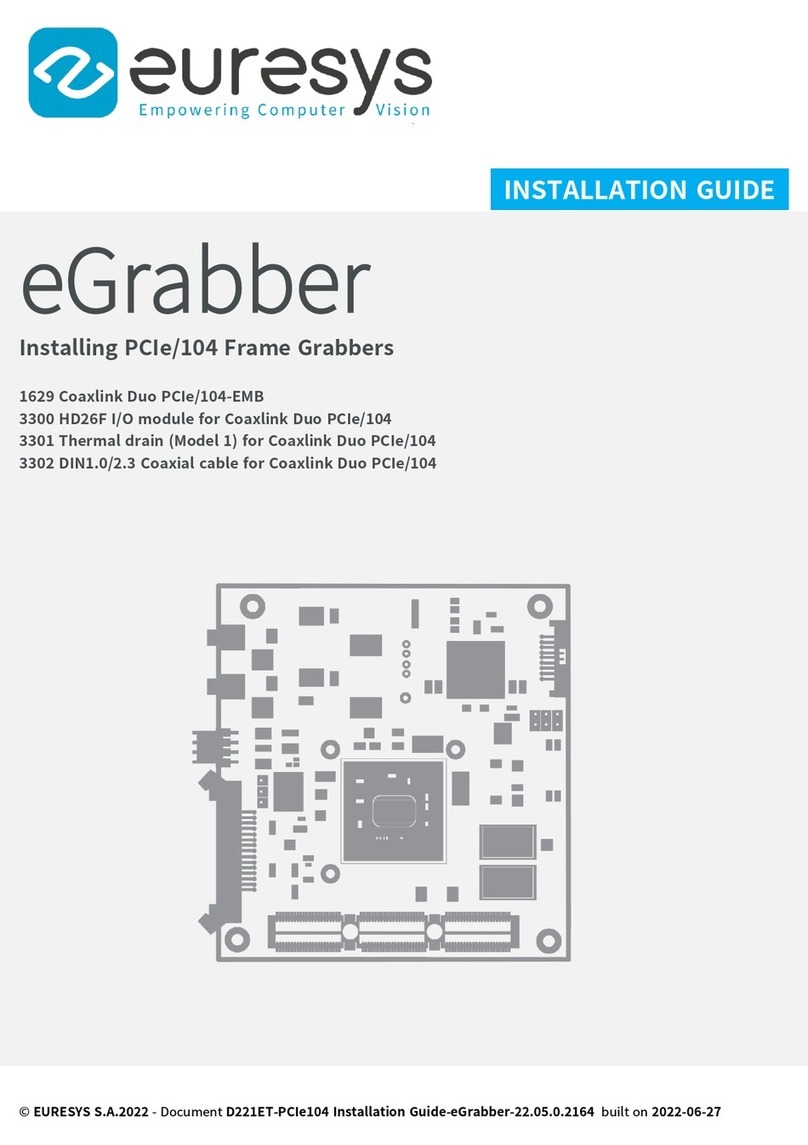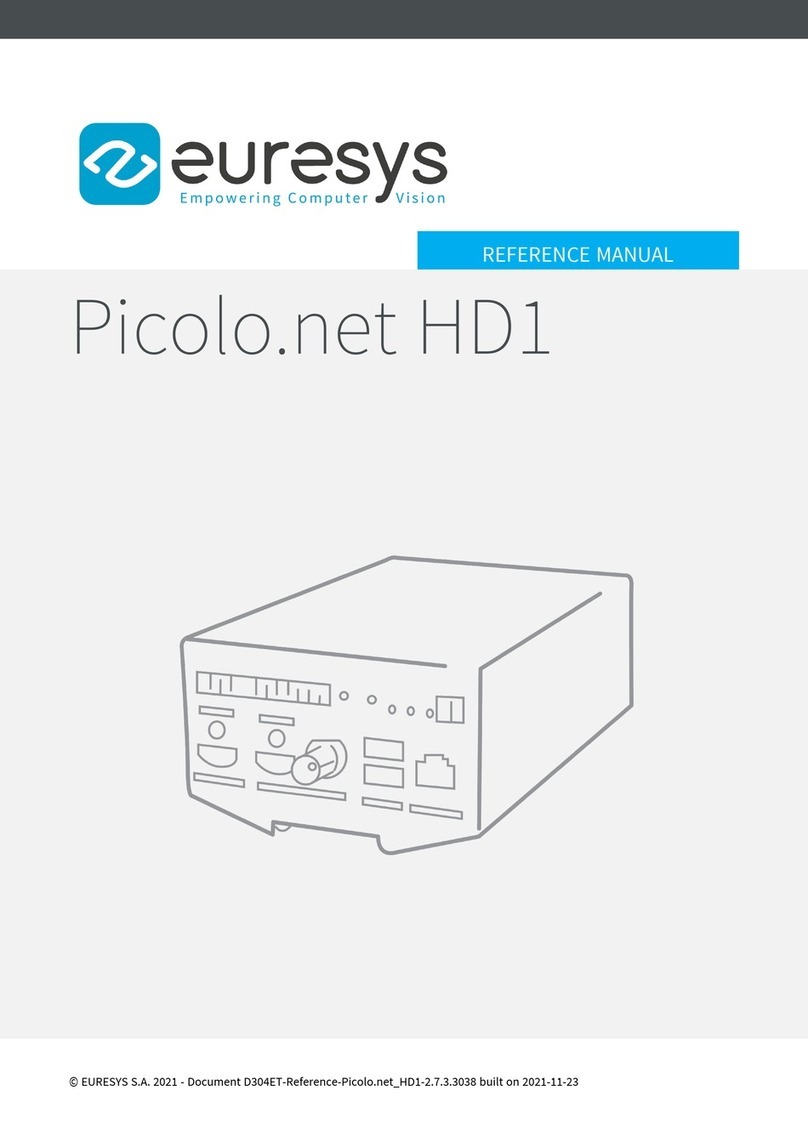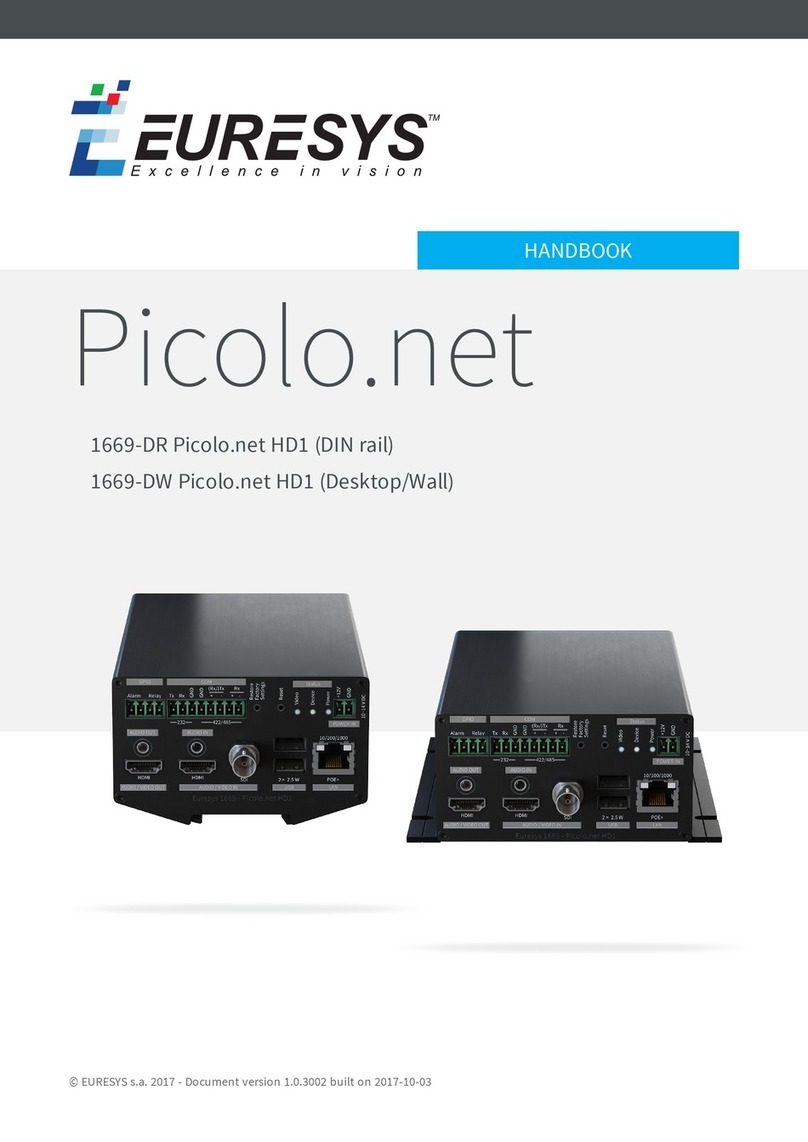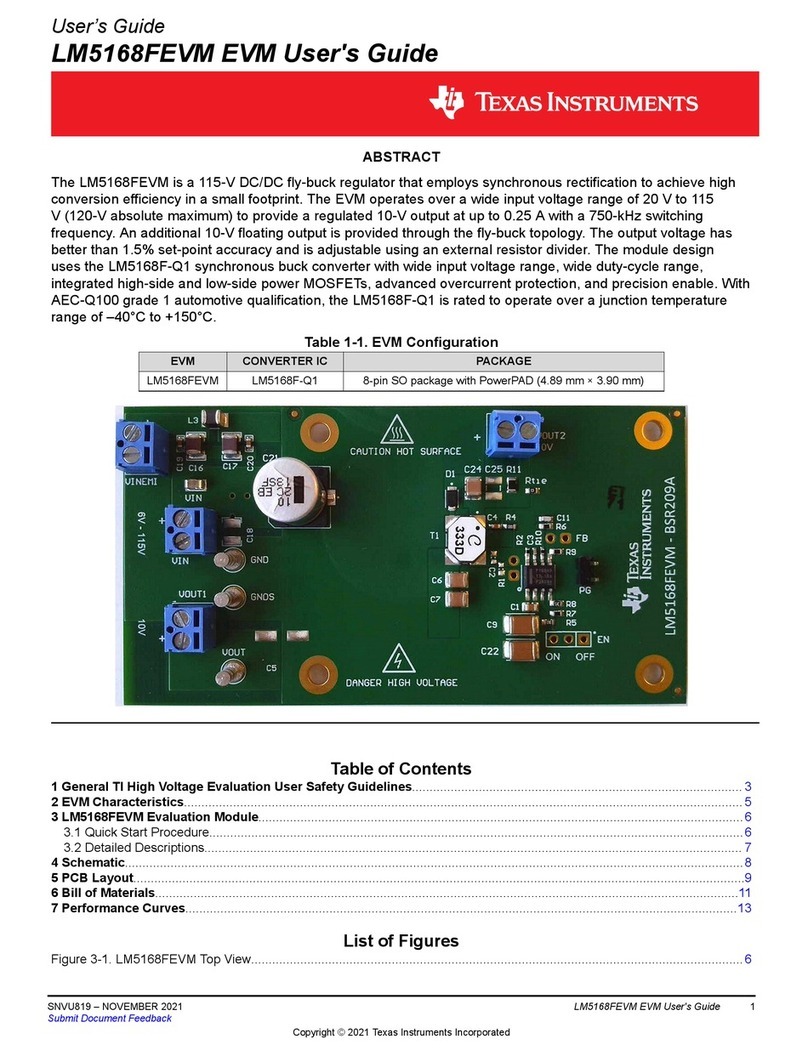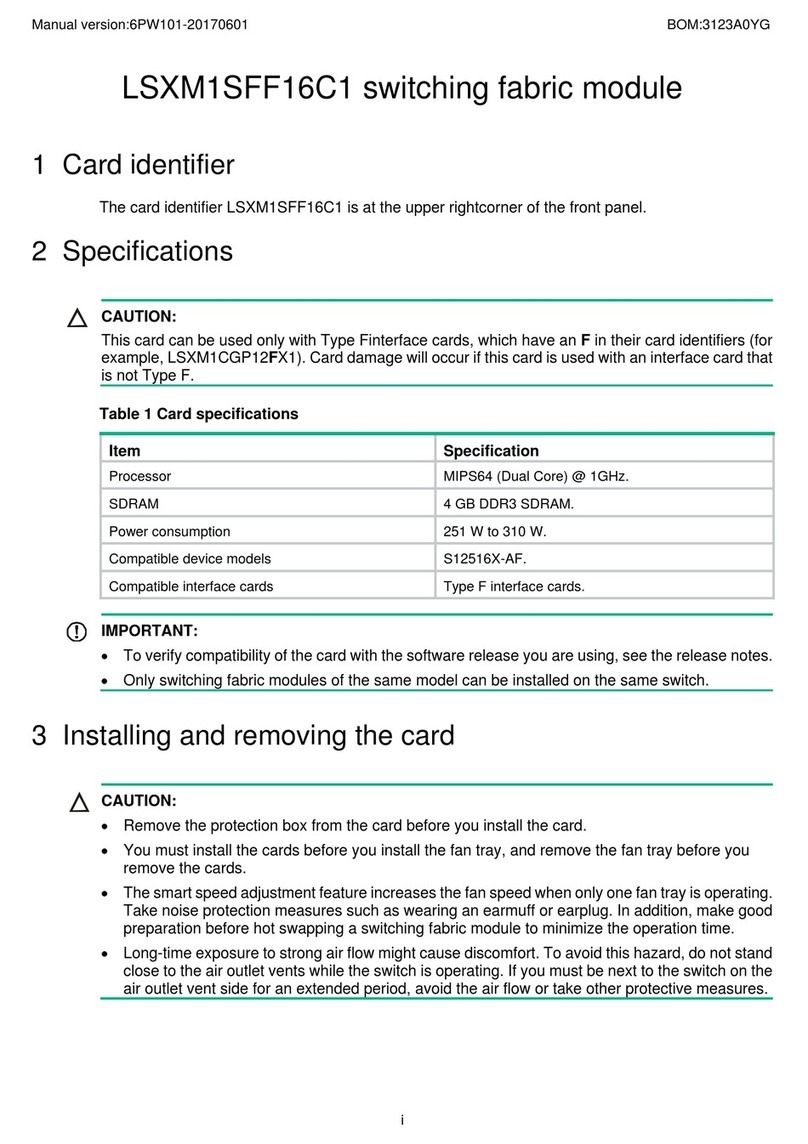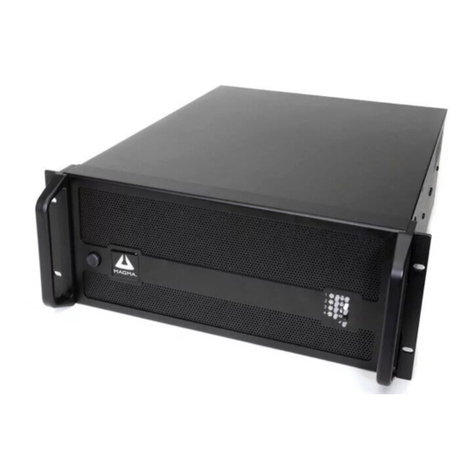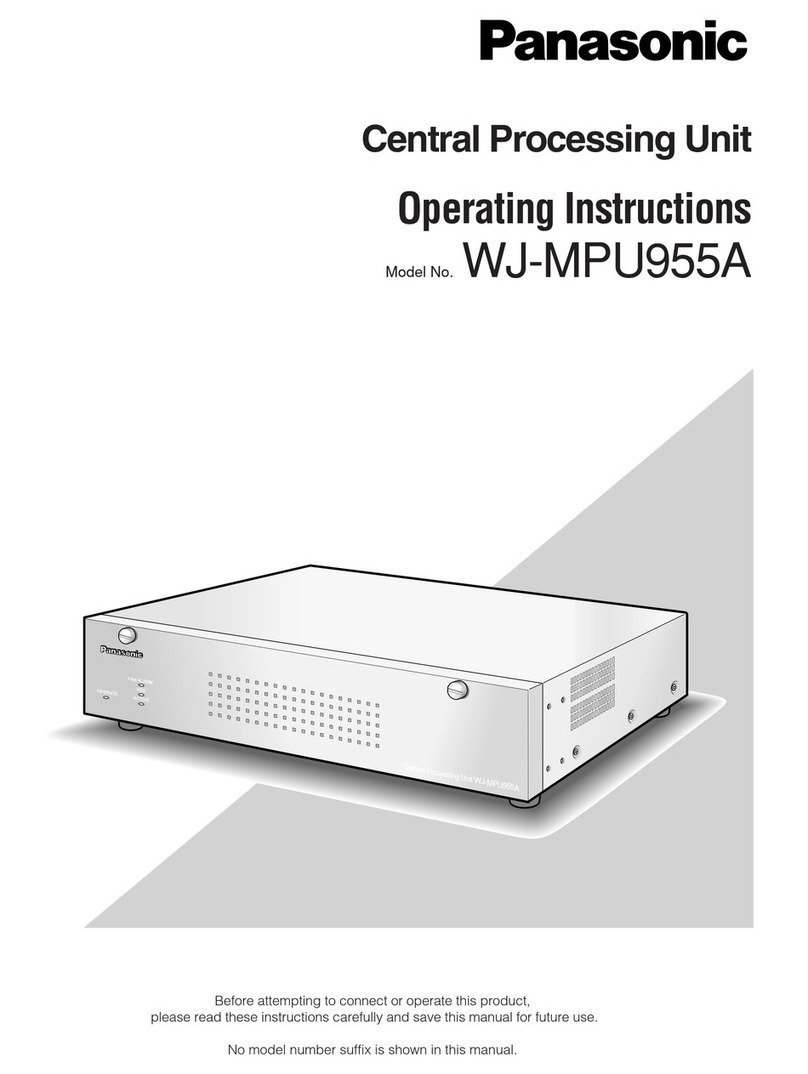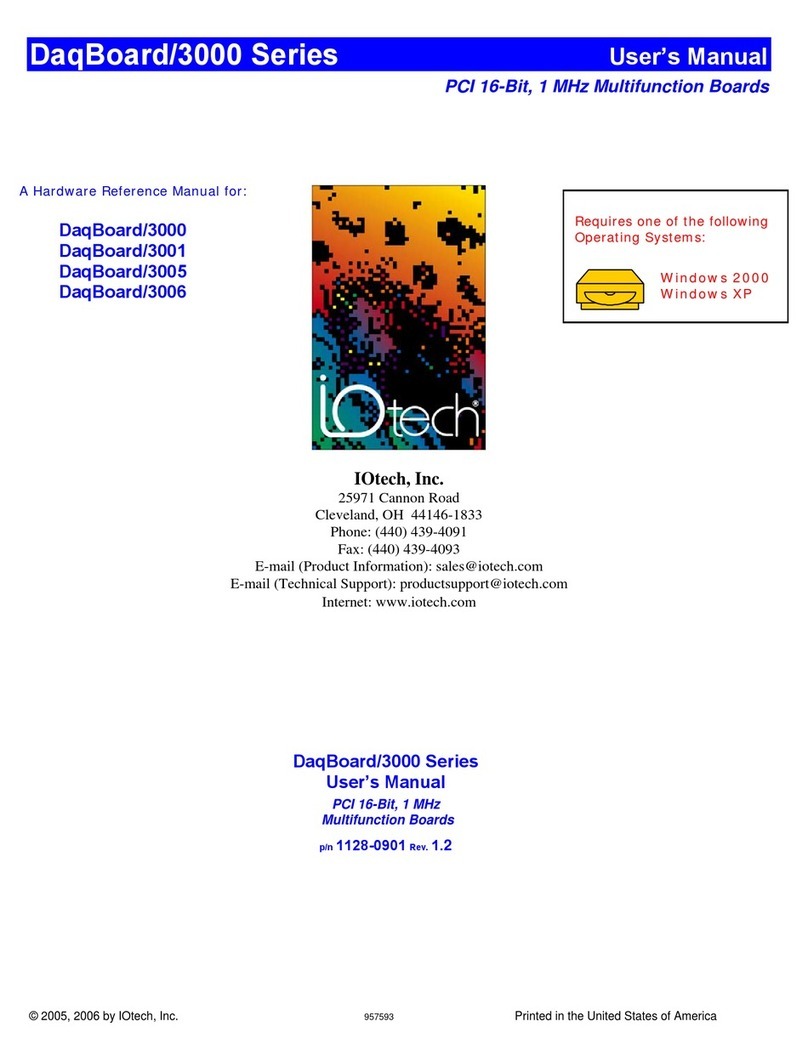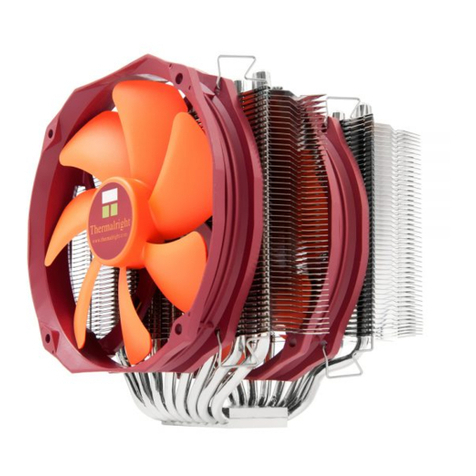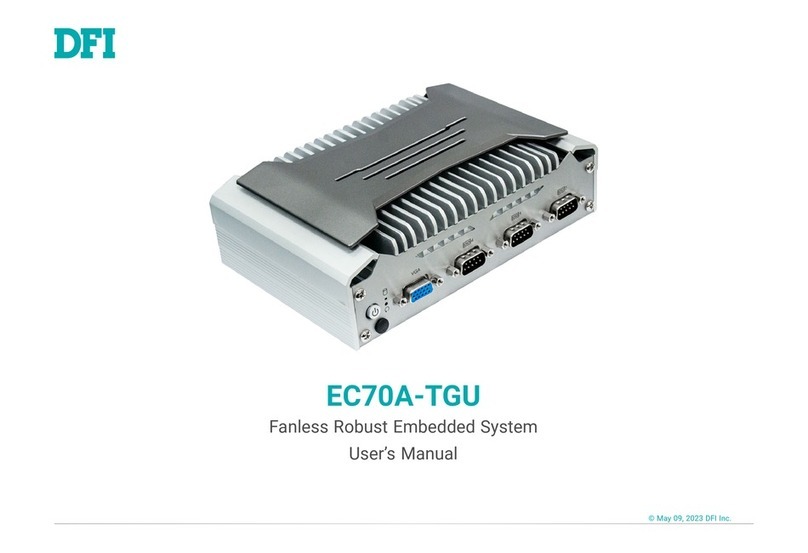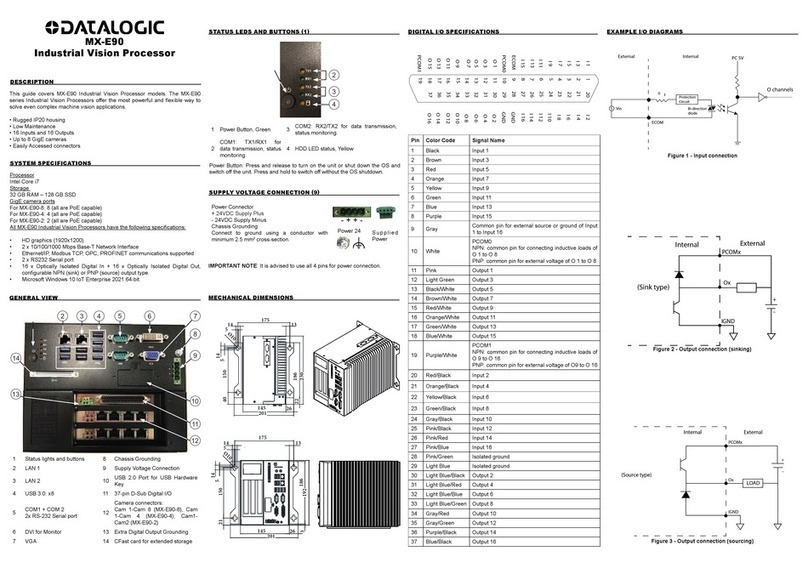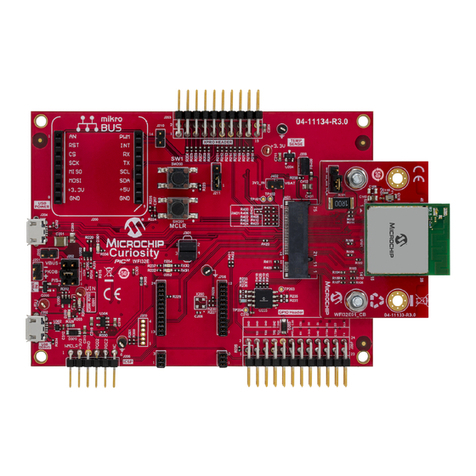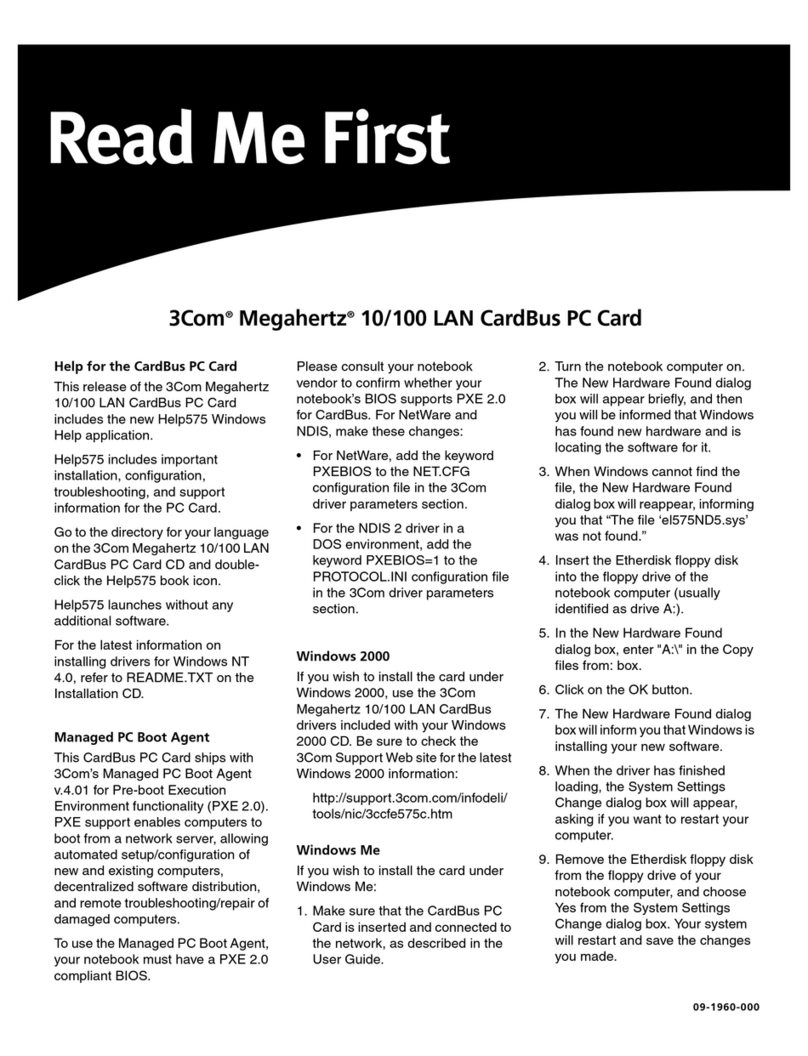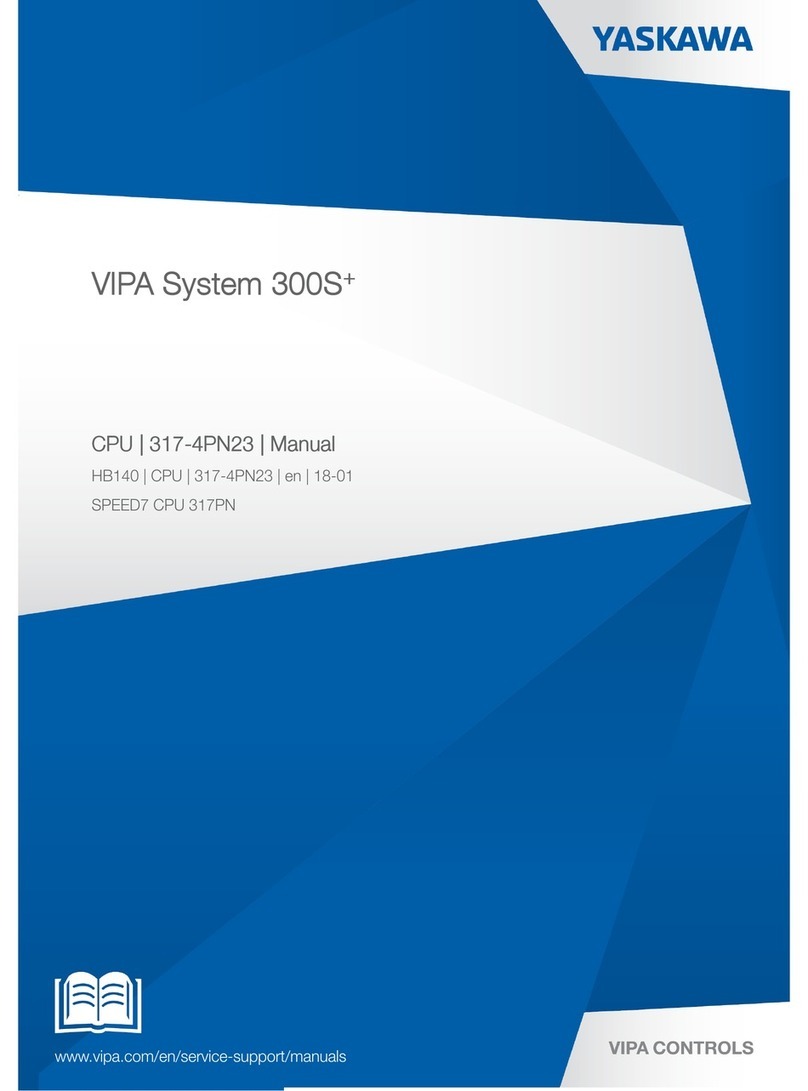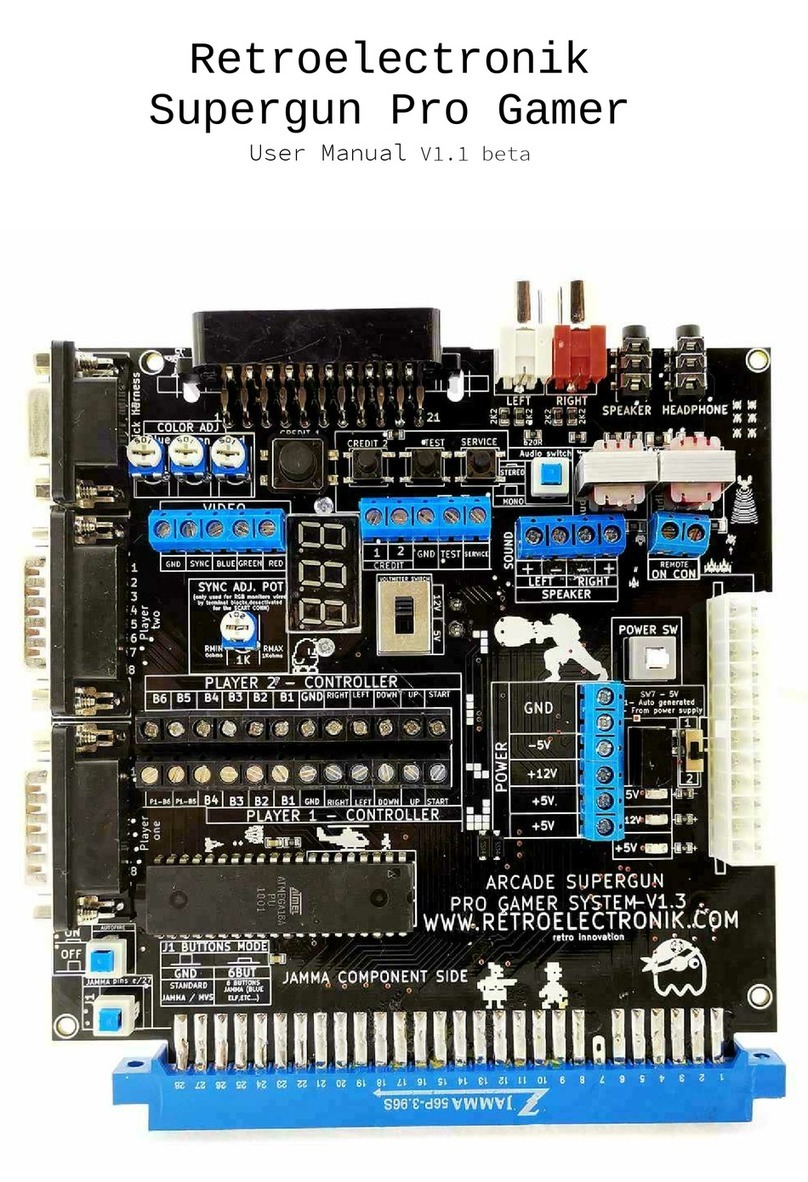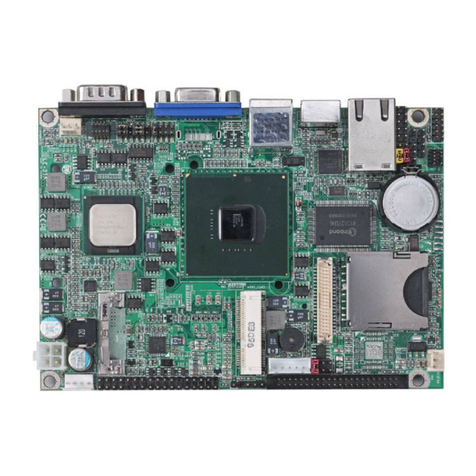
2. Precautions for Use of Board Products
Electrostatic Sensitive Device Boards may be damaged by electrostatic discharges. Follow the procedure hereby described
and apply any general procedure aimed at reducing the risk associated with electrostatic discharge. Damage caused by
improper handling is not covered by the manufacturer's warranty.
Electromagnetic Compatibility Euresys boards are compliant with electromagnetic compatibility regulatory requirements.
To ensure this compliance, the card bracket must be secured with the relevant screw in accordance with the procedure
described herein.
Risk of Electrical Shock Do not operate the computer with any enclosure cover removed. During the hardware installation,
ensure the AC power cord is unplugged before touching any internal part of the computer.
Risk of Burn Do not touch an operating board. Allow board to cool before handling.
Heating Device It is normal for a board to dissipate some heat during operation. All enclosure covers, including blank
brackets, must be fitted correctly to ensure that the fan cools the computer adequately.
Hot Plugging Forbidden Uncontrolled plugging and unplugging of equipment may damage a board. Always switch off the
computer and any relevant system device when connecting or disconnecting a cable at the frame grabber or auxiliary
board bracket. Failure to do so may damage the card and will void the warranty.
Poor Grounding Protection The computer and the camera can be located in distant areas with individual ground
connections. Poor ground interconnection, ground loop or ground fault may induce unwanted voltage between
equipment, causing excessive current in the interconnecting cables. This faulty situation can damage the frame grabber or
the camera electrical interface.The user must follow proper equipment grounding practices at all ends of the
interconnecting cables. In addition, the use of cable assemblies with overall shield solidly connected to the conductive
shell of all connectors is recommended. Besides the beneficial effect of cable shielding on electromagnetic compatibility,
the shield connection can increase the protection level against grounding problems by temporarily absorbing unwanted
fault current.
3. PCI Express Card Slot Requirements
For optimal performance:
●1623 Grablink DualBase,1622 Grablink Full and 1626 Grablink Full XR must be plugged into a x4, x8 or x16 PCI
Express Gen 1 (or higher) card connector providing at least four active lanes.
●1624 Grablink Base must be plugged into a x1, x4, x8 or x16 PCI Express Gen 1 (or higher) card connector.
To guarantee proper operation and longer board reliability, ensure an adequate cooling of the card. The cooling is
improved by a higher air flow circulating around the board. This air flow is increased, for example, by using computer case
fans. In addition, avoid placing a Grablink card next to other heat dissipating boards.
4. PCI Express Card Installation Procedure
1. Switch off the computer and all connected peripherals (monitor, printer...).
2. Discharge any static electricity that could be accumulated by your body. You can achieve this by touching an
unpainted metal part of the enclosure of your computer with a bare hand. Make sure that the computer is linked to
the AC power outlet with proper earth connection.
3. Disconnect all cables from your computer, including AC power.
4. Open the computer enclosure, according to the manufacturer instructions, to gain access to the PCI Express slots.
Locate an available and adequate PCI Express slot.
5. Remove the blank bracket associated with this location. To achieve this, remove the securing screw and keep it aside
for later use in the procedure. Keep the blank bracket in a known place for possible re-use.
6. Unwrap the card packing, take the board and carefully hold it. Avoid any contact of the board with unnecessary
items, including your clothes.
7. Gently insert the card into the selected PCI Express slot, taking care to push it down fully into the slot. If you
experience some resistance, remove the board and repeat the operation. You should attempt to make a perfect
board-to-slot mechanical alignment for best results. Ensure that the lower part of the bracket is inserted into the
corresponding enclosure fastening.
8. Optional. When the camera(s) is (are) powered through the Camera Link cable or when the +12 V power output is
required on any System I/O connector, connect a 12 V power source to the Auxiliary Power Input connector using a 4-
pin MOLEX cable.
9. Optional. Establish the connections with the Internal GPIO connector(s) as required by the application.
10. Optional. When synchronized acquisition is required for cameras attached to different cards, establish the card-to-
card link interconnections.
11. Secure the board with the saved screw.
12. Close the computer enclosure according to the manufacturer instructions.
13. Establish the camera(s) connection(s).





